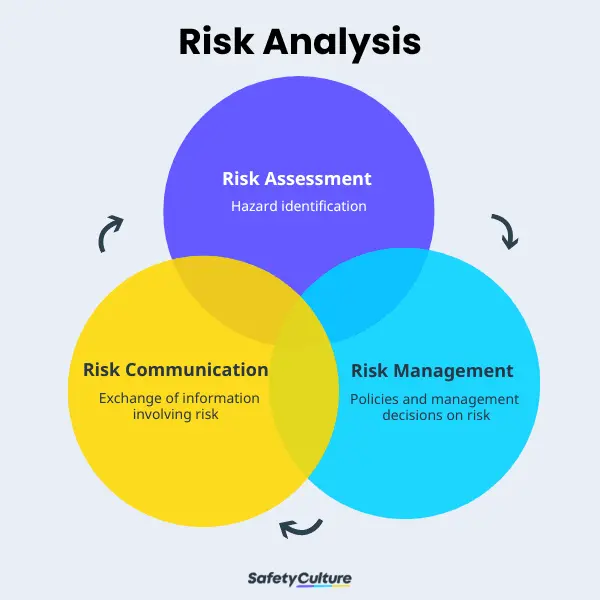Exploring the Growing Importance of Risk Management in Business Strategy
Exploring the Growing Importance of Risk Management in Business Strategy
Blog Article
Discovering the Importance of Risk Management for Effective Decision-Making Techniques
In the detailed world of service, Risk Management emerges as an essential variable in the decision-making procedure. The capability to identify possible threats and chances, and plan accordingly, can mean the distinction in between success and failure.
Understanding the Concept of Risk Management
Risk Management, a vital part in decision-making, is frequently misunderstood or oversimplified. Risk Management includes structured and disciplined strategies, making use of data and informative assessments. From economic uncertainties, lawful liabilities, calculated Management mistakes, to accidents and all-natural calamities, it addresses numerous risks - importance of risk management.
The Role of Risk Management in Decision-Making Processes
In the world of calculated preparation and service procedures, Risk Management plays an integral function in decision-making procedures. Risk Management hence comes to be an essential device in decision-making, helping leaders to make educated options based on an extensive understanding of the threats included. Risk Management serves as an important element in the decision-making processes of any kind of company.

How Risk Management Improves Strategic Planning
In the context of calculated preparation, Risk Management plays a critical function. Initiating with the identification of potential threats, it further includes the execution of Risk mitigation measures. The role of Risk Management is vibrant yet not static, as it requires consistent tracking and adjusting of techniques.
Recognizing Prospective Threats

Carrying Out Risk Reduction
Having actually developed the relevance of identifying possible risks, the following step is to discover Risk mitigation. This procedure involves developing and implementing techniques to take care of determined dangers properly. It is an important facet of tactical preparation as it improves decision-making by reducing possible negative results. Risk mitigation approaches can range from Risk evasion, Risk transfer, to risk decrease. Each technique ought to be tailored to the details Risk, considering its potential influence and the organization's Risk resistance. Efficient Risk reduction requires a deep understanding of the Risk landscape and the prospective effect of each Risk. This understanding allows organizations to focus on threats and allot resources effectively, making sure that one of the most considerable threats are resolved first.
Surveillance and Adjusting Techniques
Though Risk reduction is a critical action in calculated preparation, continuous surveillance and adjustment of these strategies is equally important. It also provides a possibility to review the success of the Risk Management actions, allowing changes to be made where needed, more enhancing calculated planning. Monitoring and adjusting Risk Management approaches is an important element for enhancing a company's strength and calculated preparation.
Instance Studies: Effective Risk Management and Decision-Making
In the world of organization and financing, effective Risk Management and decision-making frequently function as the pillars of flourishing business. One such entity is a multinational oil company that alleviated monetary loss by hedging versus rising and fall oil costs. In an additional circumstances, a technology start-up prospered by identifying and accepting high-risk, high-reward techniques in an unpredictable market. A global bank, faced with regulatory uncertainties, successfully navigated the situation via positive Risk analysis and dynamic decision-making. These cases highlight the worth of sharp Risk Management in decision-making processes. It is not the lack of Risk, however the Management of it, that usually sets apart successful business from unsuccessful ones. his response These instances emphasize the important role of Risk Management in strategic decision-making. importance of risk management.
Devices and Strategies for Reliable Risk Management
Browsing the detailed puzzle of Risk Management calls for the right set of tools and techniques. These tools, such as Risk registers and warmth maps, aid in recognizing and assessing possible risks. Methods consist of both quantitative methods, like level of sensitivity evaluation, and qualitative techniques, such as SWOT evaluation. These aid in focusing on dangers based on their prospective influence and likelihood. Risk feedback approaches, an essential element of Risk Management, involve approving, staying clear of, moving, or mitigating threats. Tracking and controlling risks, through regular audits and testimonials, make sure that the methods remain reliable. With these techniques and devices, decision-makers can browse the facility check this site out landscape of Risk Management, consequently helping with informed and reliable decision-making.
Future Trends in Risk Management and Decision-Making Approaches
As we explore the substantial landscape of Risk Management, it ends up being apparent that the techniques and devices used today will certainly proceed to progress. Future trends direct in the direction of an enhanced dependence on innovation, with expert system and machine learning playing considerable roles. These innovations will certainly make it possible for organizations to anticipate prospective threats with greater precision and make more educated choices. Furthermore, there will be a growing focus on resilience, not simply in handling threats however likewise in jumping back from adverse scenarios. Last but not least, the principle of Risk culture, where every participant of an organization understands and involved in Risk Management, will certainly get extra importance. These fads declare an even more inclusive and positive method in the direction of Risk Management and decision-making.
Final thought

Risk Management thus ends up being an important tool in decision-making, aiding leaders to make enlightened selections based on a thorough understanding of the threats included. Risk mitigation techniques can range from Risk evasion, Risk transfer, to take the chance of reduction (importance of risk management). Effective Risk reduction requires a deep understanding of the Risk landscape and the possible influence of each Risk. Risk action techniques, an essential component of Risk Management, include accepting, staying clear of, Web Site transferring, or mitigating dangers. The concept of Risk society, where every participant of a company is conscious and included in Risk Management, will certainly gain extra prominence
Report this page